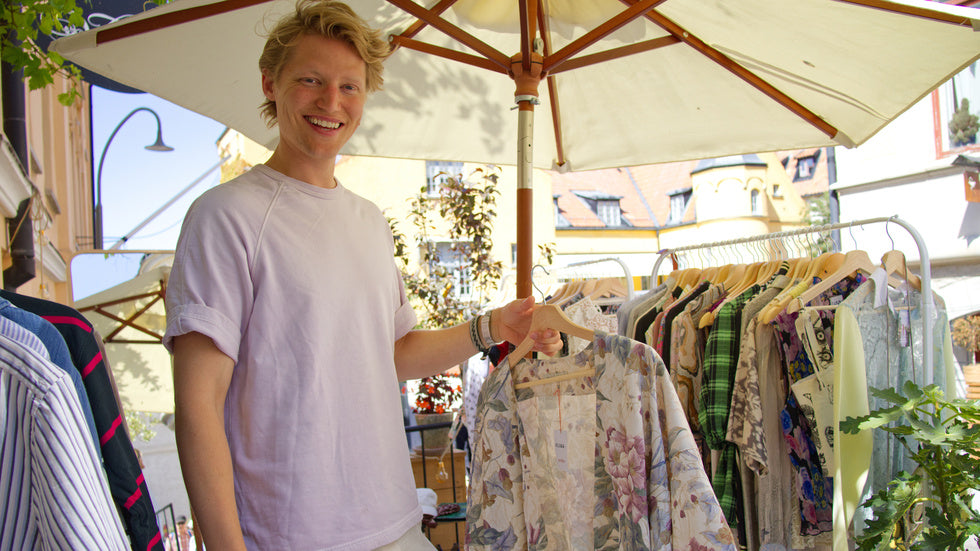The fashion industry needs a reset, and we need a fresh relationship with our wardrobes! Meet Ludvig Alervall, CEO and co-founder of the Swedish marketplace SLOWFASHION, focused on premium and luxury fashion, as he talks about his background in the fashion industry and solutions to the challenges the industry faces.
Name: Ludvig Alervall
Location: Stockholm
Passion: slow fashion!
Work: co-founder of SLOWFASHION - Swedish second hand marketplace for premium and luxury fashion
Current: The latest in a series of pop-ups - Regeringsgatan 61 in Stockholm, open until Sunday September 29th
What inspired you to start slowfashion.se, and what’s your personal connection to the fashion industry?
I kind of stumbled into the fashion industry. After finishing my studies, I joined GANT. While GANT did a lot for sustainability, it was surprising to see nothing much happen post-outlet. My time in the fashion world was beautiful and fascinating, but it still lacked something I deeply wanted to create. That’s the idea behind slowfashion.se — creating a truly circular model of sustainability.
How do you see second-hand fashion’s role in promoting sustainability within the industry?
It’s become more than just a trend. In the past, second-hand was mainly seen as a cheaper alternative, but now it carries a certain prestige. It’s about showing style, responsibility, and a deeper awareness of fashion’s environmental impact.
What steps does slowfashion.se take to ensure eco-friendly operations?
Sustainability is at the heart of everything we do, with circularity as our core principle. We don’t feel the need to constantly emphasize this—it’s obvious in how we operate. As we grow, we’re focused on minimizing transport impacts and embracing eco-friendly shipping solutions to keep our footprint as light as possible.
How do you engage with your customers and build a community around second-hand fashion?
When users upload an item, they have the chance to write its story—a little background that adds context and meaning to the piece. It’s all about passing on that narrative, making it personal and creating a connection between users.
What trends are you currently noticing in the second-hand fashion market?
It’s wild how fast trends move now, largely because of social media and fast fashion. Anyone can set or follow a trend, and they can last as little as three months or up to a year. In the '80s or '90s, trends would stick around for years. Keeping up with this pace is a real challenge, especially for smaller companies, but it’s something we’re constantly navigating.
What advice would you give to someone looking to start a sustainable fashion business?
My biggest advice: keep your side hustle going as long as you can. Don’trush into leaving your job to focus on your project. I stayed at GANT for two years after starting slowfashion.se, and that allowed me to grow the business without feeling the pressure too soon.
How important is collaboration in your business model? Could you share an example of a successful partnership?
I’m all about the vibe that comes from good collaborations. I worked on partnerships at GANT, and I find it so interesting to see how two businesses or creatives can come together. Right now, there’s a strong trend in remake culture—artists turning old clothes or bags into art or wearable pieces. We’re aiming to spotlight these creators on our platform. We’re not there yet, but that’s definitely where we’re headed.
How do you envision the future of fashion, particularly around sustainability and second-hand?
I really hope we can bring power back to the end user. You should be in control of what you buy, how you use it, and how it lives on in your wardrobe.Over the next 5 to 10 years, I’d love to see a shift where more people actively engage with their wardrobes, being creative and perhaps even renting their clothes. I believe there will be more niche marketplaces, offering new ways to consume fashion sustainably.
Visit one of SLOWFASHION’s pop-ups this fall, currently Regeringsgatan 61 Stockholm. Thanks for the chat, Ludvig!

